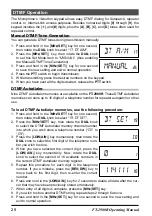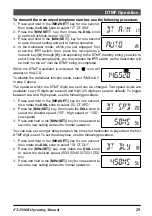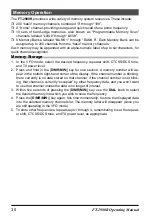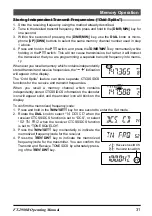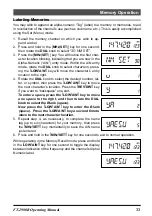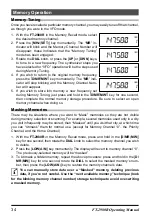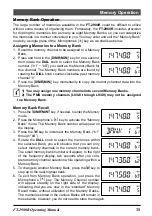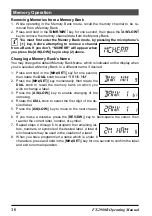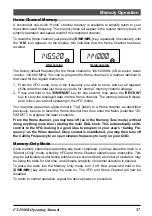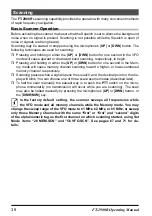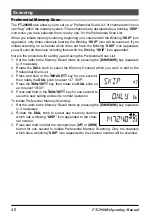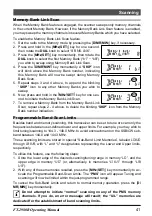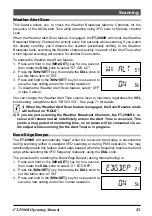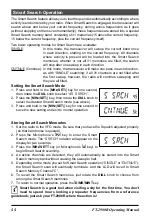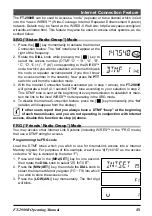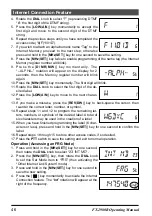
Storing Independent Transmit Frequencies (“Odd Splits”)
1. Store the receiving frequency using the method already described.
2. Tune to the desired transmit frequency, then press and hold in the [
D/MR
(
MW
)] key for
one second.
3. Within five seconds of pressing the [
D/MR
(
MW
)] key, use the
DIAL
knob or micro-
phone [
UP
]/[
DWN
] buttons to select the same memory channel number used in step
1 above.
4. Press and hold in the
PTT
switch, and press the [
D/MR
(
MW
)] key momentarily while
holding in the
PTT
switch. This will not cause transmission, but rather it will instruct
the transceiver that you are
programming
a separate
transmit
frequency into memo-
ry.
Whenever you recall a memory which contains independently
stored transmit and receive frequencies, the “
” indication
will appear in the display.
The “Odd Splits” feature can store separate CTCSS/DCS
functions for the receive and transmit frequencies.
When you recall a memory channel which contains
independently stored CTCSS/DCS information, the decoder
icon will appear solid, and the encoder icon will blink on the
display.
To confirm the memorized frequency/code:
1. Press and hold in the [
MHz
(
SET
)] key for one second to enter the Set mode.
2. Rotate the
DIAL
knob to select “
14 DCS CD
” when the
receiver CTCSS/DCS function is set to “DCS”, or select
“
52 TN FRQ
” when the receiver CTCSS/DCS function
is set to “TONE SQUELCH”.
3. Press the [
MHz
(
SET
)] key momentarily to indicate the
memorized frequency/code for the receiver.
4. Press the [
REV
(
DW
)] key to indicate the memorized
frequency/code for the transmitter. You can confirm the
Transmit and Receive TONE/DCS by alternately press-
ing of the [
REV
(
DW
)] key.
: Transmit tone/DCS
: Receive tone/DCS
31
Memory Operation
FT-2980R Operating Manual












